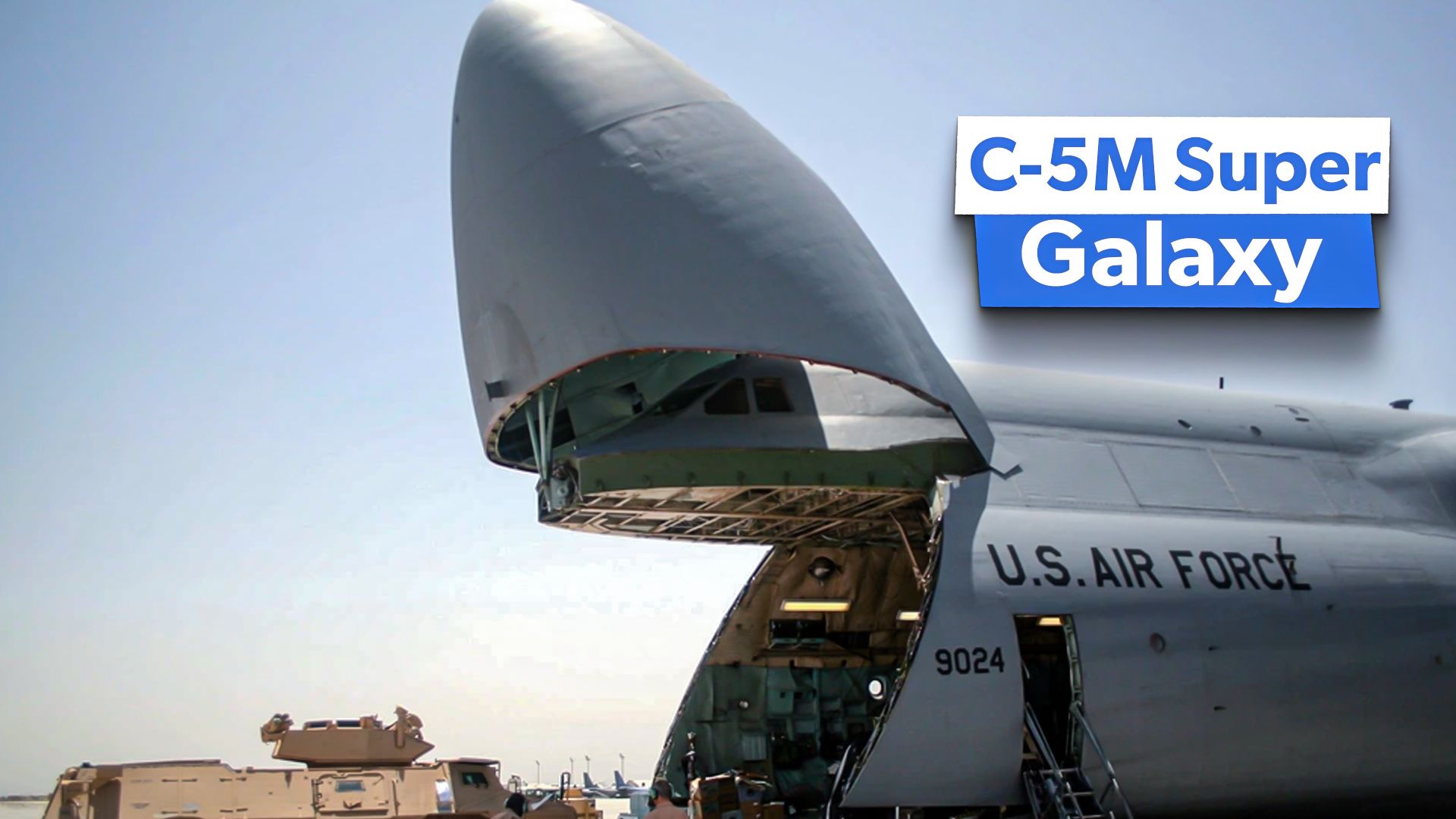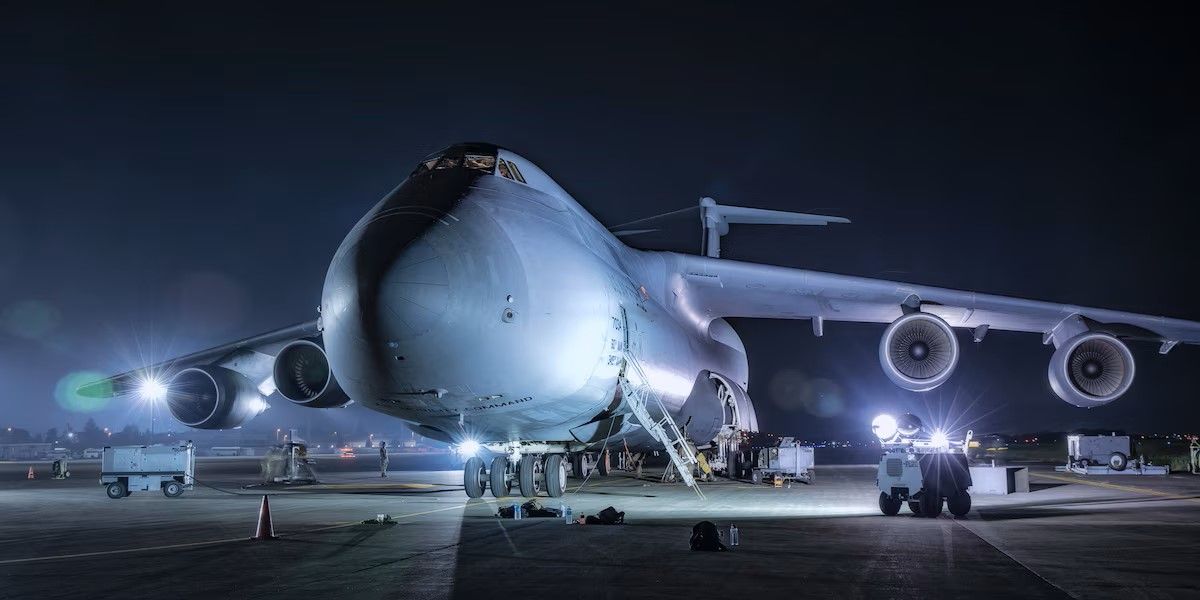Summary
- The C-5 Galaxy, aka “FRED,” has been serving the USAF since 1970, with the latest version, the C-5M Super Galaxy, projected to remain in service until 2040.
- The military mission types supported include strategic airlift, humanitarian aid, and disaster relief.
- The C-5M Super Galaxy has supported NASA missions, carrying satellites and supplies for the International Space Station.
In a recent Simple Flying article, I wrote about how the crew members of the Lockheed C-5 Galaxy (including one of my own US Air Force Basic Military Training [BMT] Military Training Instructors [MTIs]), in a self-deprecatingly humorous gesture, lovingly refer to their beloved bird as “FRED,” as in “F*cking Ridiculous Economic Disaster.” This is due to the plane’s expense and reliability issues.
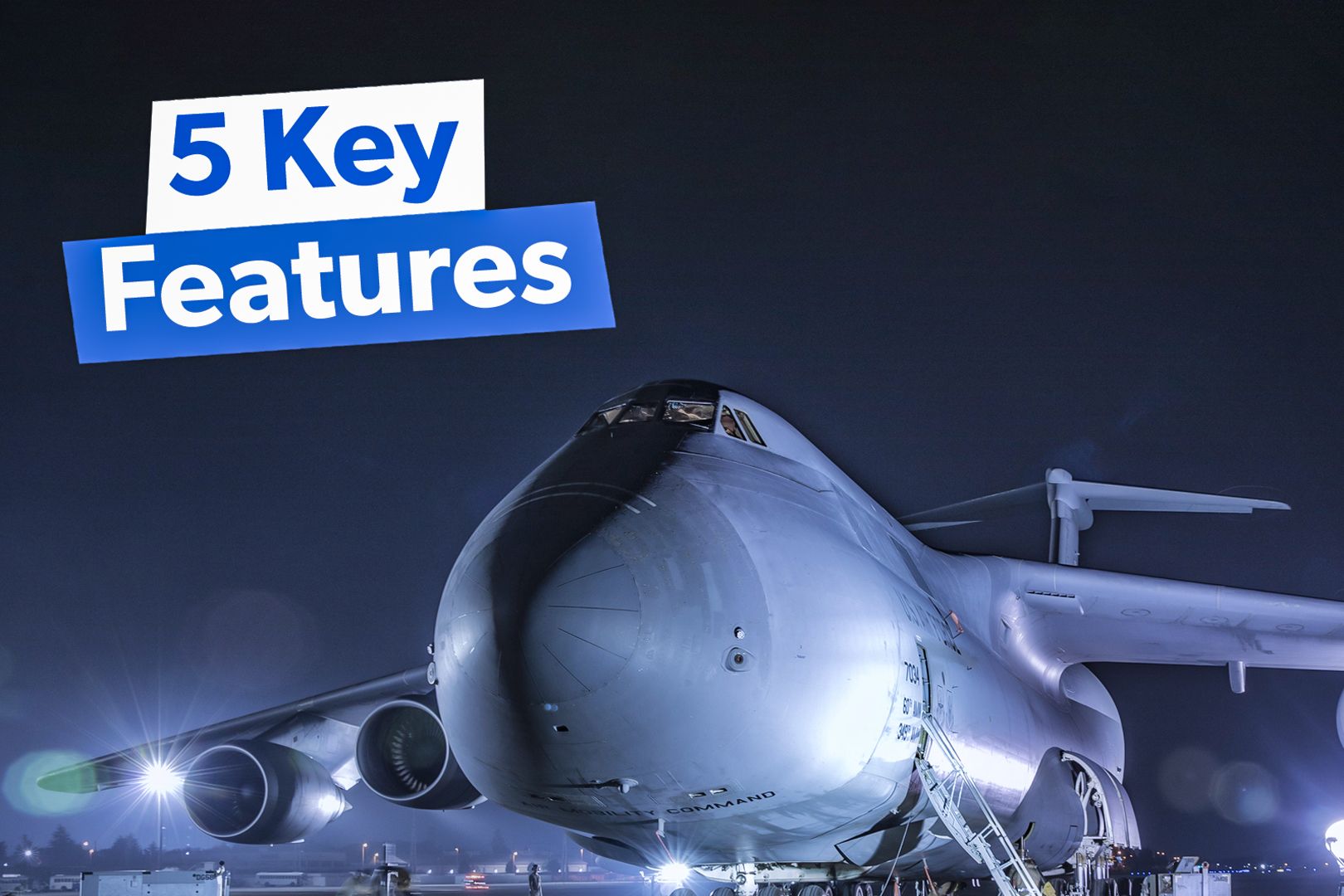
Related
5 Key Features Of The USAF Lockheed C-5 Super Galaxy
The C-5 has been serving the U.S. Air Force since 1970. The latest edition, the C-5M Super Galaxy, comes with a spare of improvements and upgrades.
Be that as it may, dear ol’ “FRED” is still here to stay, having endured in one variant or another since 1980, with the latest & greatest version, the C-5M Super Galaxy, having served USAF Air Mobility Command (AMC; known as Military Airlift Command [MAC] back in the Cold War days) since 2008 and expected to have a service life lasting until 2040. Having previously covered 5 Key Features of the Super Galaxy, I shall now cover some of the military mission types that this behemoth cargo plane supports.
Strategic airlift
The bread-and-butter mission of the C-5M. As noted by the official USAF Fact Sheets on the plane:
“Its primary mission is to transport cargo and personnel for the Department of Defense… It can carry oversized cargo over intercontinental ranges and can take off and land on relatively short runways.”
Being the single largest aircraft in the entire US Department of Defense inventory, the Super Galaxy certainly has the size and carrying capacity for that primary mission! We’re talking a cargo load of 281,001 lb (127,460 kg), which is twice the cargo capacity of a C-17 Globemaster, and a fuselage length of 247 ft 10 in (75.3 m). As noted in the Simple Flying article linked below, “The compartment is large enough to fit 36 pallets, multiple helicopters, or a smaller stealth plane.”
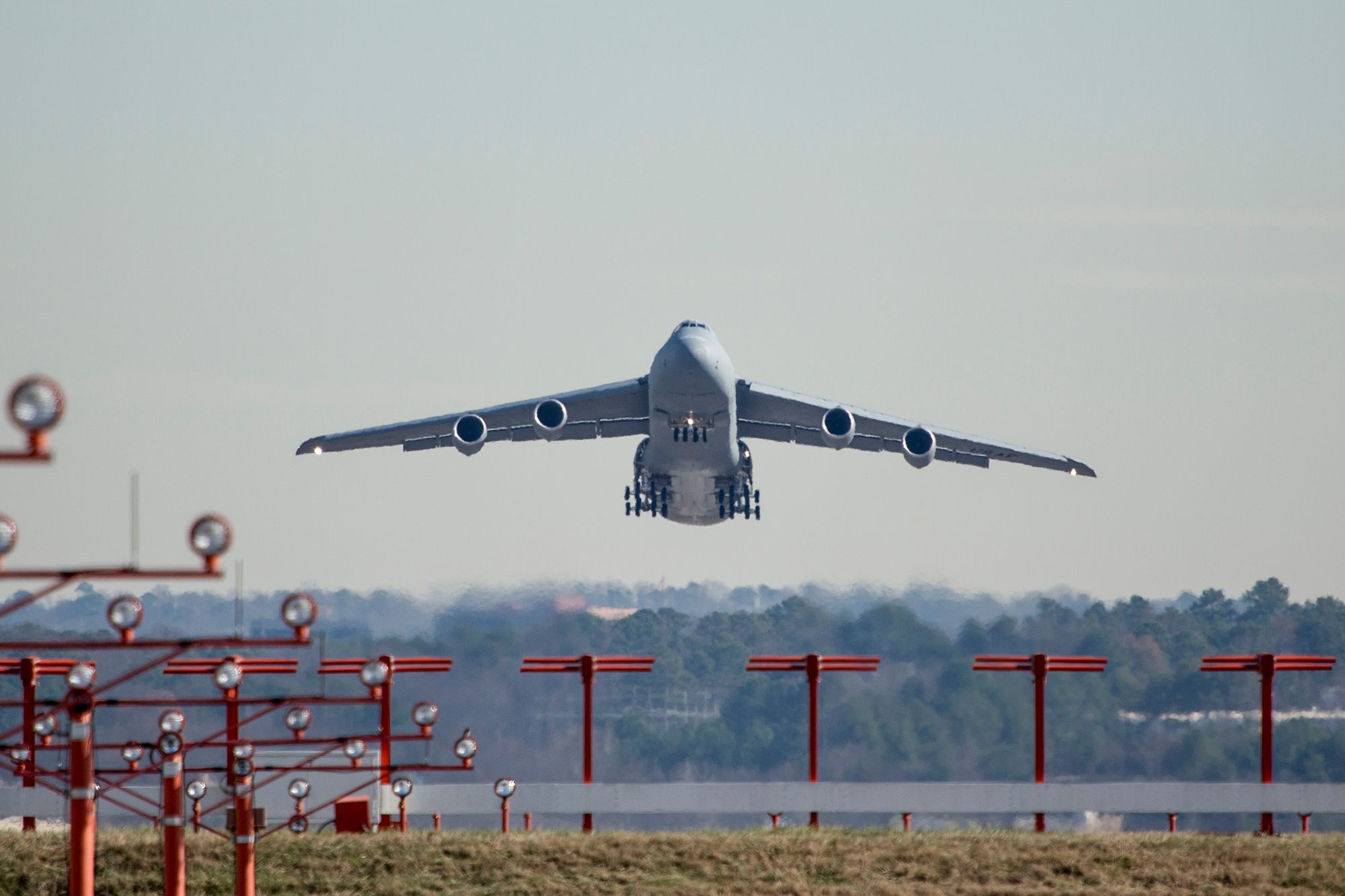
Related
An Absolute Unit: Everything You Need To Know About The Lockheed C-5 Galaxy
The airplane is higher than a six-story building, features an upper deck for up to 80 passengers, and can carry multiple helicopters simultaneously.
Humanitarian aid and disaster relief
Here are a couple of examples of the humanitarian missions carried out by “Super FRED” (so to speak):
- June 2024: A 433rd Airlift Wing C-5M and a 68th Airlift Squadron crew transport 166,000 lb (75,296.3 kg) of food from Tinker AFB, Oklahoma, to Panama Pacifico International Airport, just outside Panama City.
- September 2020: A C-5M aircrew of the 60th Air Mobility Wing, 22nd Airlift Squadron, of Travis AFB, California, delivers 49,000 pounds (22,226 kg) of humanitarian aid to La Aurora International Airport, Guatemala City. The aid package was comprised of 21 pallets holding food, water, and school furniture supplies.
Support for the space program
With a name like “Super Galaxy,” it only makes sense from a semantic standpoint that they’d figure out a way for this plane to support the National Aeronautics and Space Administration (NASA), eh? After all, even though NASA is a civilian Federal government agency, there’s been a longtime nexus between the space agency and the US Armed Forces, from the myriad of former military officers who’ve gone on to become NASA astronauts to the multiple aircraft that have proven themselves fungible for both NASA and DOD applications.
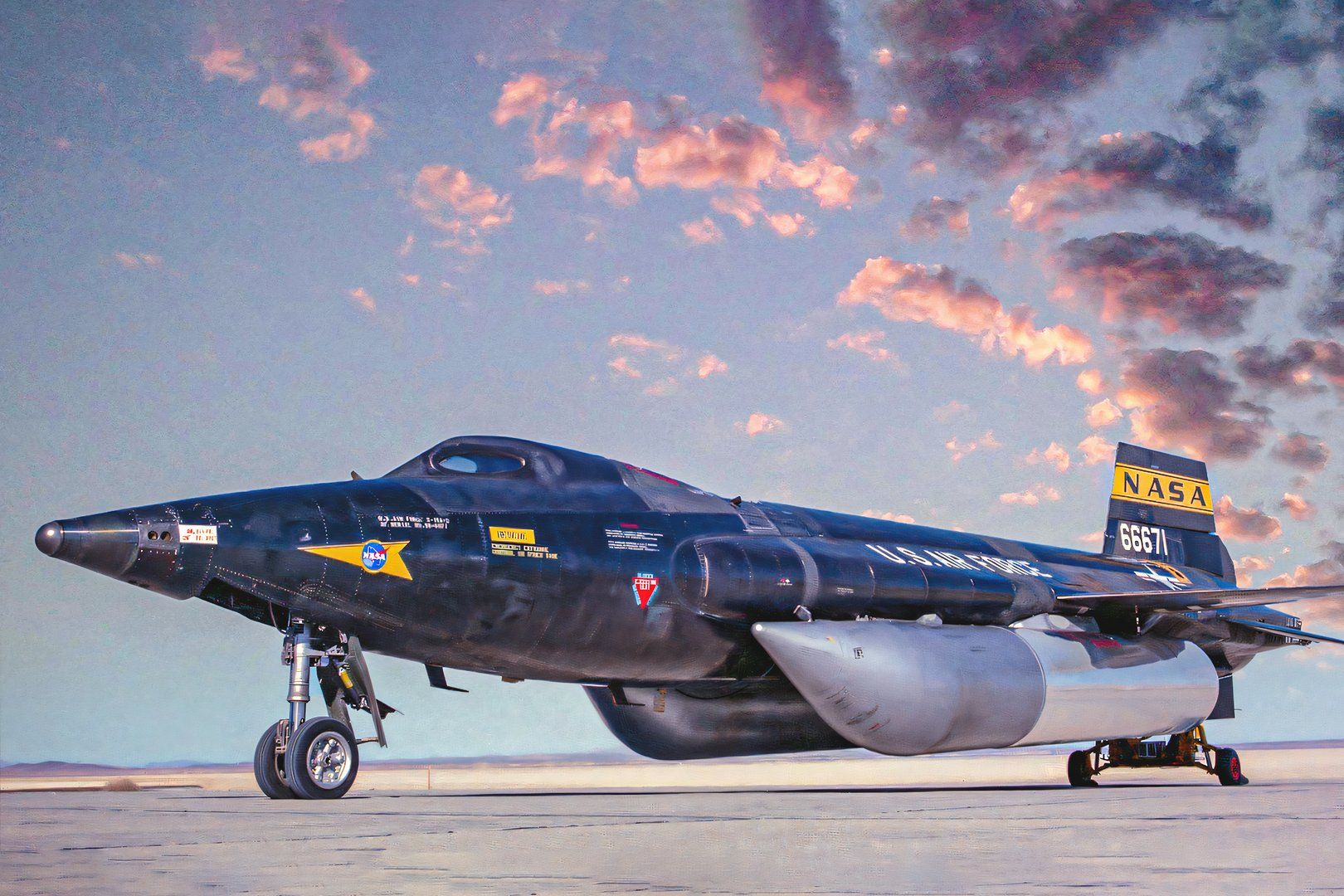
Related
5 Ways NASA Programs Have Influenced US Military Aircraft Design
NASA technology has had its fair share of influence on US military aircraft design.
Actually, the C-5M isn’t even the first variant of the series to be considered for supporting NASA missions: way back in the early 1970s, NASA considered the C-5 for the Shuttle Carrier Aircraft role, to transport the Space Shuttle to the Kennedy Space Center; however, they passed up “FRED” in favor of the Boeing 747 “jumbo jet.”
However, fast-forward to 2015, and the Super Galaxy got to make up for previously lost time and missed opportunity, admittedly not as a Shuttle Carrier but still providing support to NASA. As described by Senior Airman (SrA) Charles Rivezzo in an October 2015 article for the 60th Air Mobility Wing Public Affairs office at Travis AFB, California:
“Lockheed Martin and base officials recently recorded in-flight noise and vibration data onboard a C-5M Super Galaxy, ensuring the newly upgraded airframe was still compliant with NASA requirements…The objective of the test was to collect interior noise and vibration data to verify that the C-5M Space Cargo Modification (SCM) cargo compartment still met the vibroacoustic requirements set forth by NASA, said Brian Austin, a Lockheed Martin representative assigned to the 60th Maintenance Group…In order to record the data, engineers strategically placed 12 microphones, five single-axis accelerometers and four triaxle accelerometers throughout the aircraft’s specially modified cargo compartment.”
“One of only two C-5Cs, an aircraft specially modified to carry satellites and other large cargo, the aircraft recently returned here after being retrofitted with General Electric CF6-80C2 engines and modernized as part of the C-5M Reliability Enhancement and Re-Engining Program (RERP)… NASA is currently one of the C-5C’s largest customers and has utilized it to carry satellites, components of the International Space Station and the Hubble Space Telescope…Unlike traditional C-5s, the C-5M-SCM’s aft troop compartment was removed and special modifications were made to the rear loading doors, creating a larger cargo area that can accommodate and transport the Space Container Transportation System.”
Meanwhile, more recently (as in this past January), a C-5M with a combined crew of active-duty airmen of the 9th Airlift Squadron and Lockheed Martin employees transported a National Oceanic and Atmospheric Administration (NOAA) Geostationary Operational Environmental Satellite (GOES-U, NOAA’s newest weather satellite) from Buckley Space Force Base, Colorado to the Kennedy Space Center:

